Here’s something to chew on: Singapore Airlines’ long-haul Business Class seat, commonly known as the 2013J (2013= year of introduction, J= Business Class), is now a decade old.

That doesn’t mean every seat out there has literally 10 years to its name, but it does mean the ideas, technology, and design language behind it are long in the tooth- actually older than a decade, since the conceptualisation process takes several years.
While the 2013J seat isn’t bad by any means, it’s hardly market-leading anymore. I could name you many products I’d rather fly: Qatar Qsuites, ANA The Room, Delta One Suites, Etihad Business Studio, STARLUX A350 Business Class, even United Polaris (remember, we’re just talking hard product!).
But here’s the thing- SIA never intended for this seat to stick around so long. In fact, had everything gone according to plan, we’d already be in the process of sunsetting it.
The culprit? Boeing’s perpetually-delayed B777X programme. Enough ink has been spilled on the epic saga which is the B777X, suffice to say that SIA was originally supposed to receive its first B777-9 in 2021. As things stand, it’s unlikely we’ll see any of them in the fleet until 2025, or even 2026 since SIA isn’t the launch customer.

This delay has forced SIA to extend the operating life of its B777-300ER fleet and their ageing 2013J seats much longer than it would have liked. It also means we’ll see the longest gap in the introduction of a new long-haul Business Class seat since the turn of the century!
| 💺 SIA Long-haul Business Class Seats | |
| Year | Seat |
| 1998 | 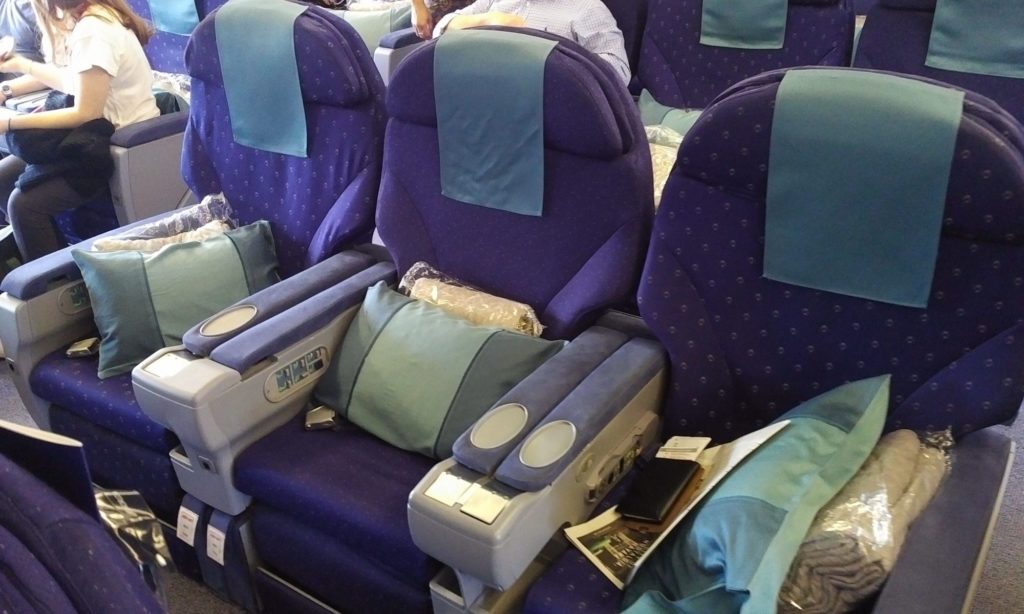 Ultimo Ultimo |
| 2002 (+4 years) |
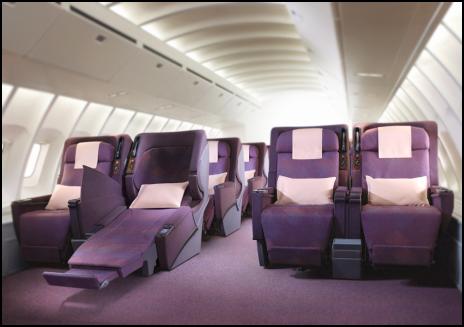 Spacebed Spacebed |
| 2006 (+4 years) |
 2006J 2006J |
| 2013 (+7 years) |
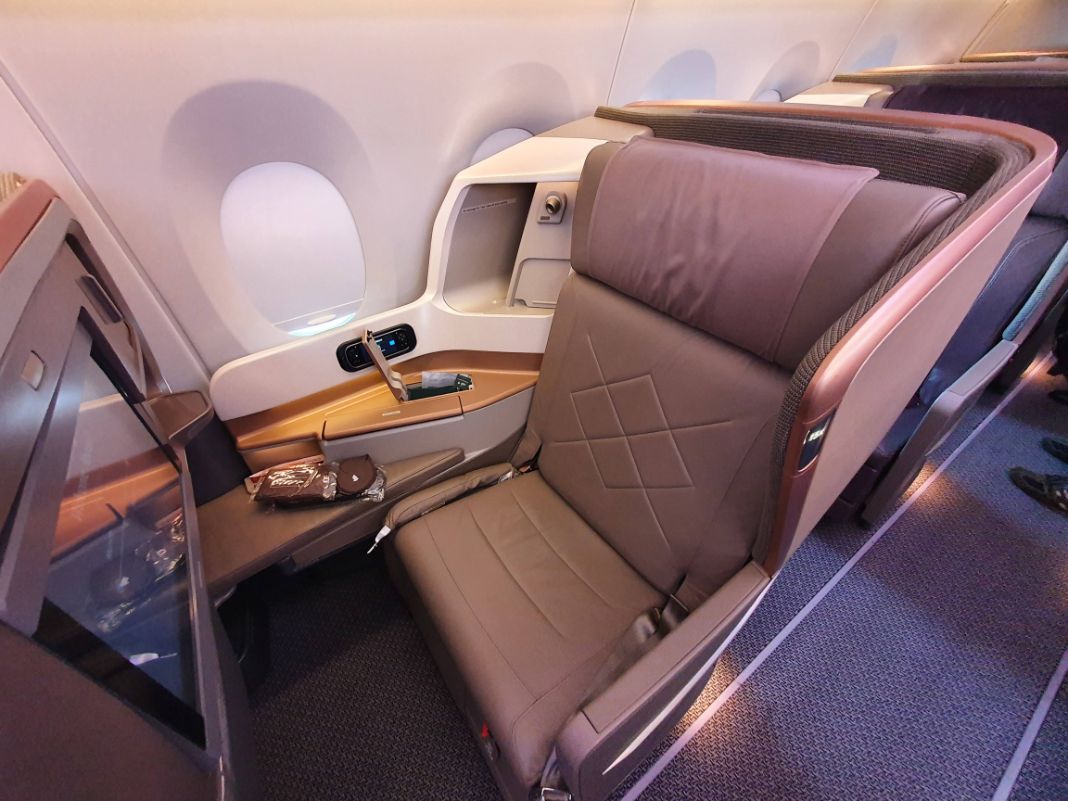 2013J 2013J |
| 2017 (+4 years) |
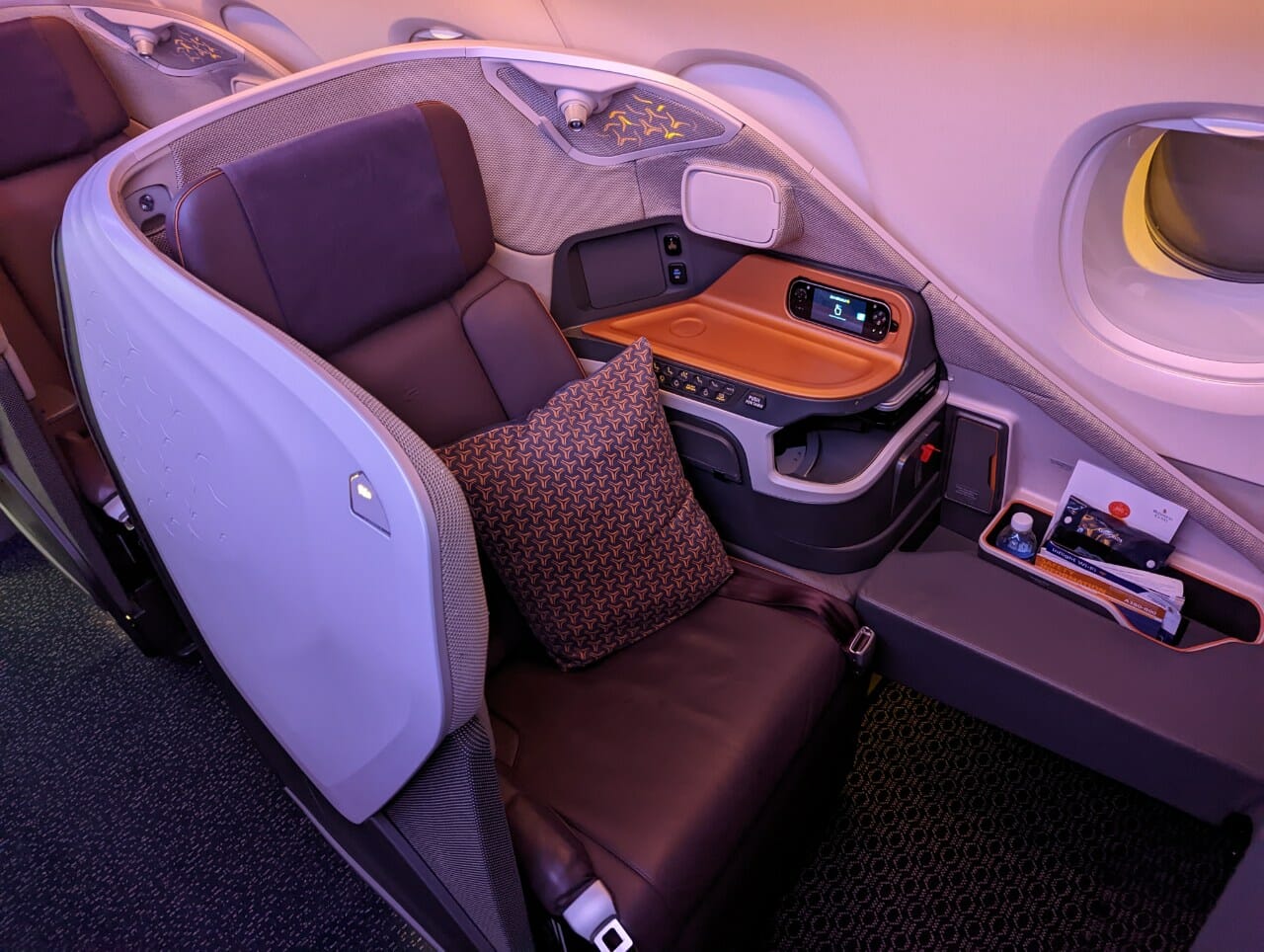 2017J 2017J |
| 2025/2026 (+8/9 years) |
 2025/2026J 2025/2026J |
It’s public knowledge that SIA’s next-generation Business (and First) seats have already been finalised, with the carrier signing off on the designs all the way back in November 2021. In fact, a select group of elite flyers have already seen the finished article, their lips sealed by ironclad NDAs.
But the delays to the B777-9 have put the airline in an uncomfortable situation: do they announce the new seat now, and risk a Lufthansaesque farce where it becomes the industry equivalent of vapourware? Or do they pull an ANA and introduce the new seat with virtually no notice, thereby missing out on the opportunity to generate some buzz in the run-up?
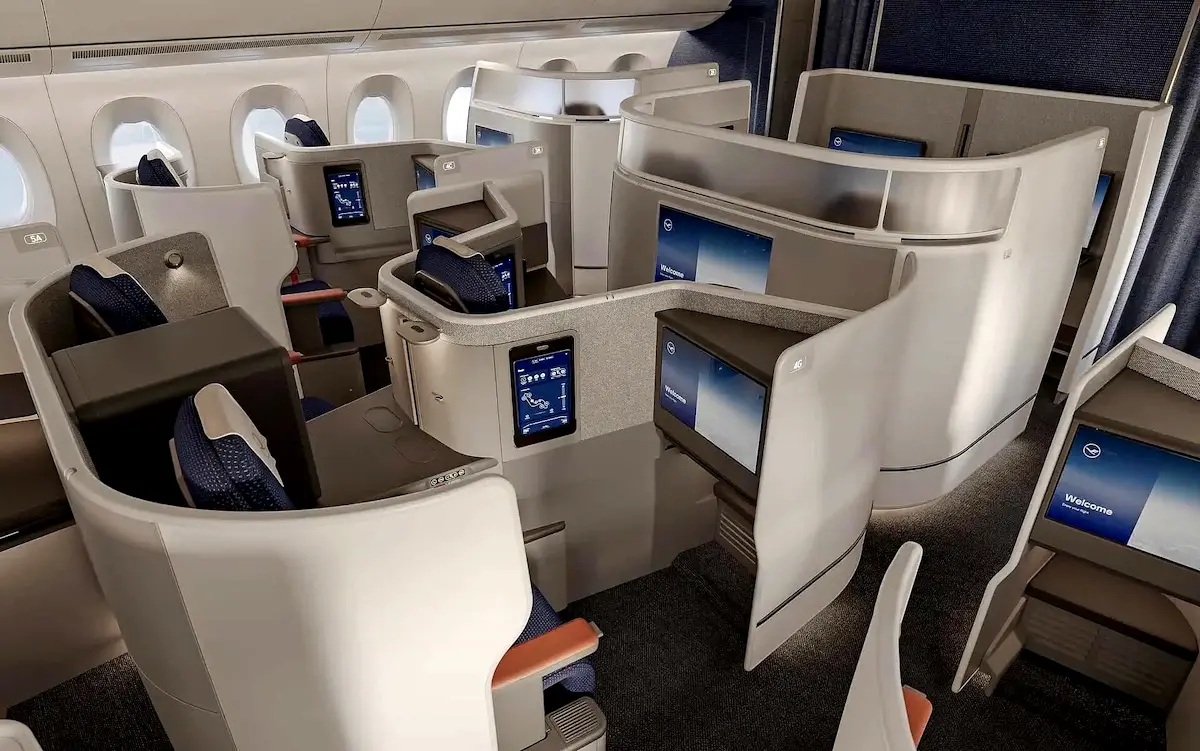
I’m sure there have been intense discussions within SIA HQ, though the airline has thus far erred on the side of reticence.
There’s a much bigger problem than publicity, however. When the B777-9 finally joins the SIA fleet, at least four years will have passed from the time the seat was finalised. That’s an eternity in this industry, and the concern is that we’ll see something that arrives a few years out of date (to be fair, this would be a problem for other B777X customers too).
SIA has said that the delays will give it extra time to “review some designs, re-look at and double-check some things like technologies (and) to look at different materials before the final selection”, but that sounds to me like putting on a brave face, because really, there’s only so much you can modify without going back to the drawing board.
So! With all that being said, what am I hoping to see in the new Business Class product?
|
Note: I’m only going to be referring to the hard product here, so I won’t be touching on things like service routines, amenities kits, bedding and catering. Feel free to share that in the comments though! Also, I’ll be making reference to SIA’s existing Business Class seats throughout this post, so if you’re unfamiliar, it’d be useful to refer to the following guide (I’ve ranked them here). |
Couple/family-friendly layout
While it’s a given that SIA will go for an all-aisle access configuration, what I’d really like to see on the new B777-9 Business Class is a layout that’s more couple and family-friendly.
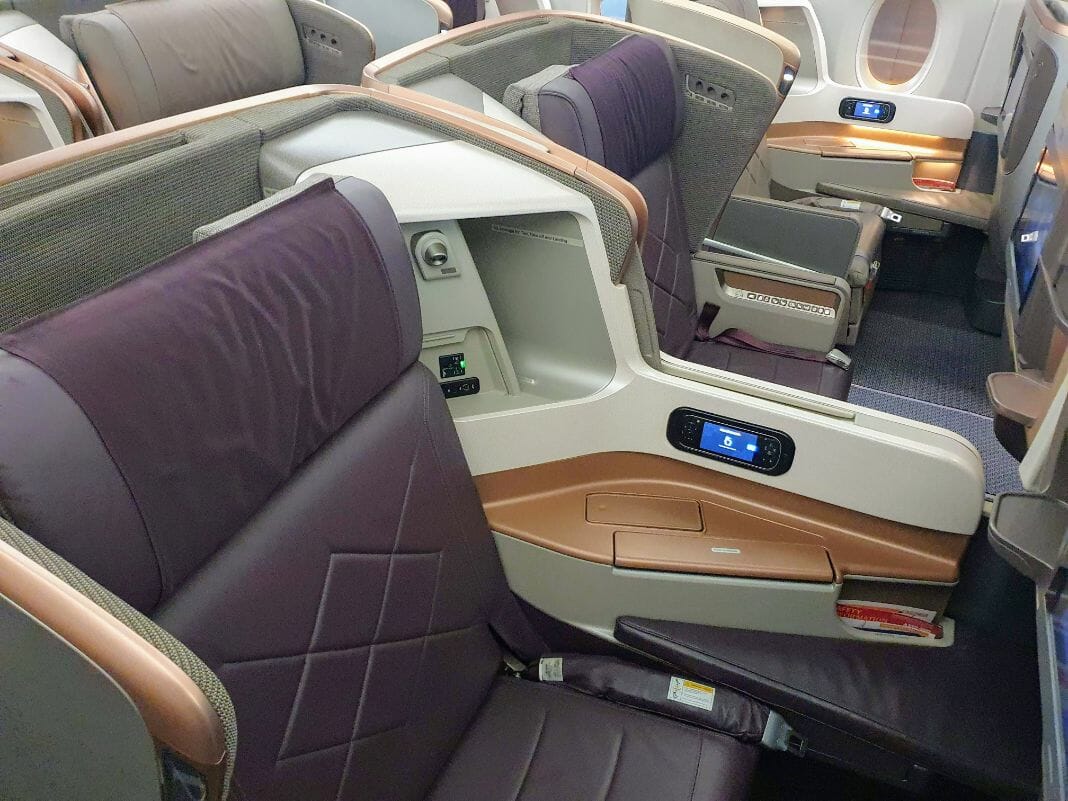
The 2013J seat is terrible for this, because even with the privacy divider retracted all the way, it’s impossible to see your seat mate without leaning far forward. That’s annoying enough for couples who want to make eyes at each other; what about parents who need to cut up food for their kids and make sure they’re not redecorating their seat?
| 💺 Worse on the 2018RJ |
|
If you think that’s bad, check out the 2018RJ (found on the A350-900MH and B787-10), where the “honeymoon seats” let you hold hands, but not see each other. Maybe that’s the idea. |
In fact, I’ve had parents telling me they miss the 2009RJ seats on the A330-300, because the design, outdated though it may be, made it much easier to monitor their children!
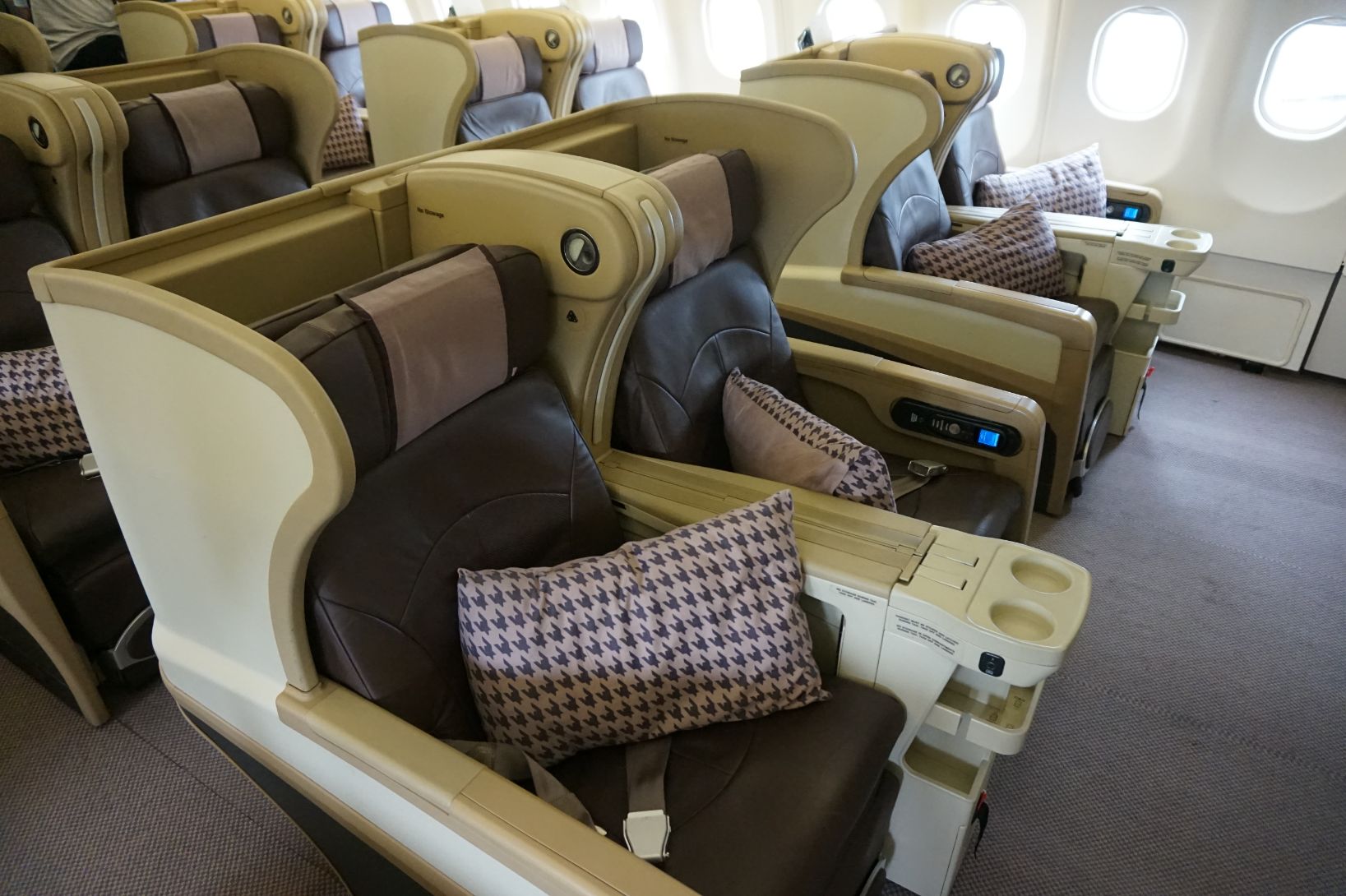
Now, I think SIA has got the message. If the A380’s 2017J seat is anything to go by, the airline has figured out that couples and families value the ability to see each other and interact throughout the flight. Hence, the centre seats have aligned seatbacks and a privacy divider which can be lowered for easy conversation and sharing food.
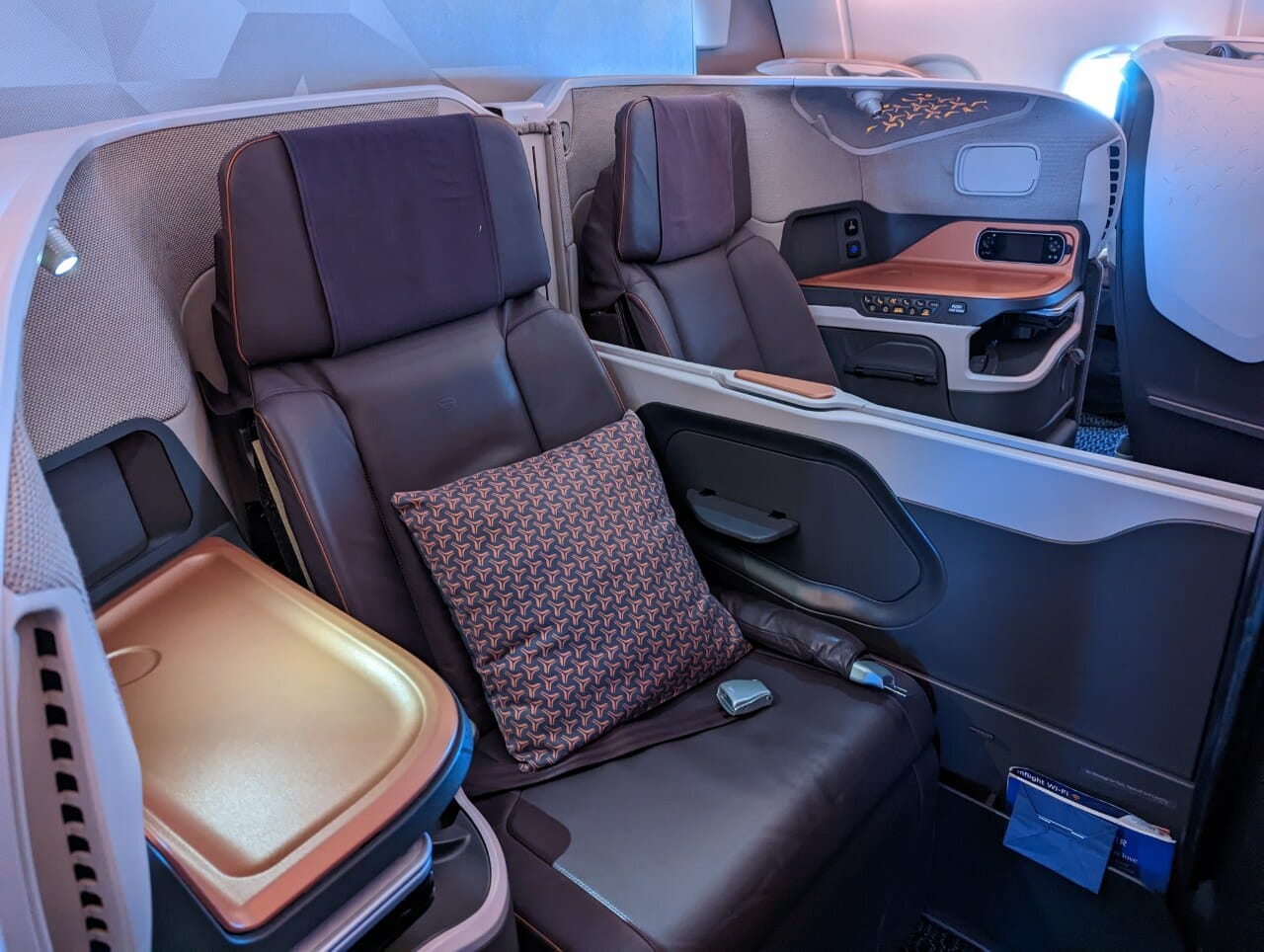
I fully expect the B777-9 Business Class seats to be similarly designed, allowing the inflight experience to be shared more intimately, as opposed to the structurally-enforced isolation that prevails right now.
Then there’s the question of double beds, and truth be told, I’m actually indifferent here. Selected pairs of 2017J seats can be transformed into a double bed, though it’s really more like two single beds pushed together. The divider between the seats is rock-hard, and unless you’re in a bulkhead row, your bodies will be angled away from each other. Forget spooning; the best you’ll manage is a polite “good night”.

So even though double beds get an outsized amount of press, I find them to be gimmicky, at least in Business Class. I think it’s telling that the only two major airlines to have attempted double beds in Business Class are SIA and Qatar Airways, the latter with slightly more success. Unless SIA figures out a better way to implement these, I wouldn’t consider it a must-have.
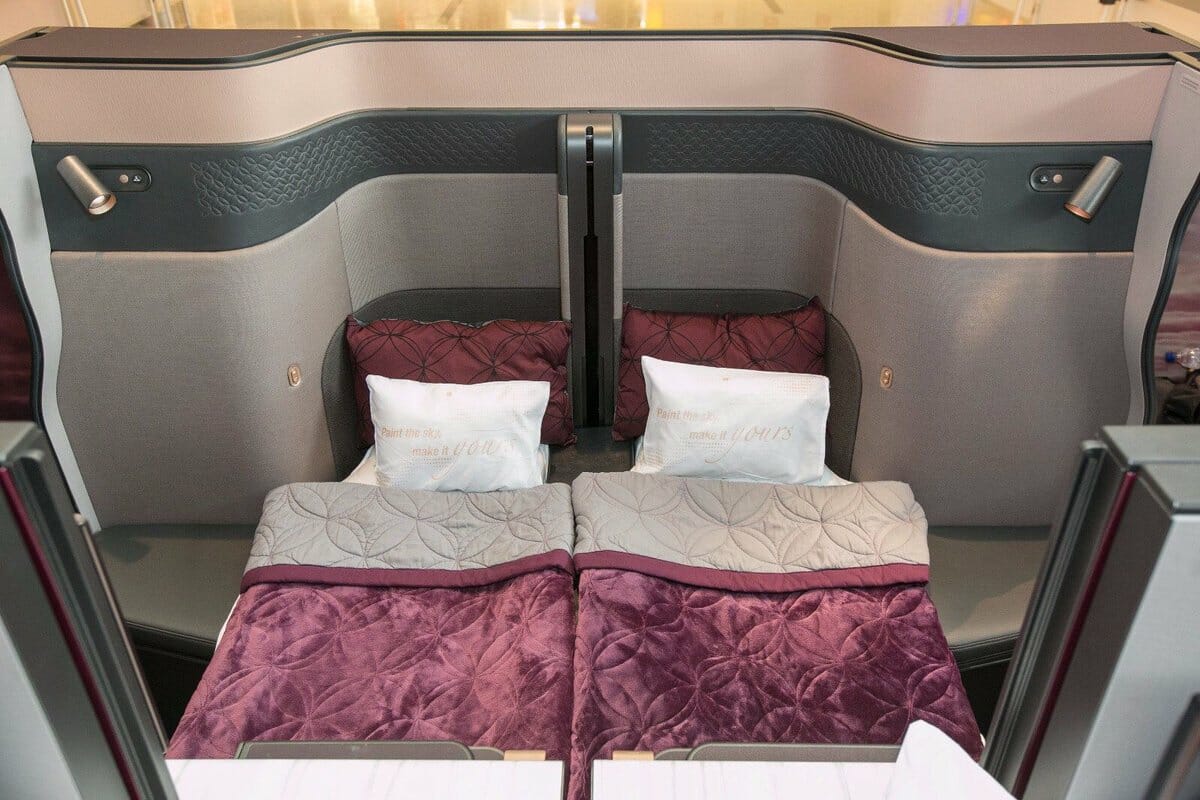
Since we’re talking about family-friendly, I do wonder if SIA was taking notes on Qatar Airway’s Quad, the block of four Qsuites that can be converted into one single room. I have to say, I like the concept. It’s something that’s genuinely innovative instead of mere derivative.
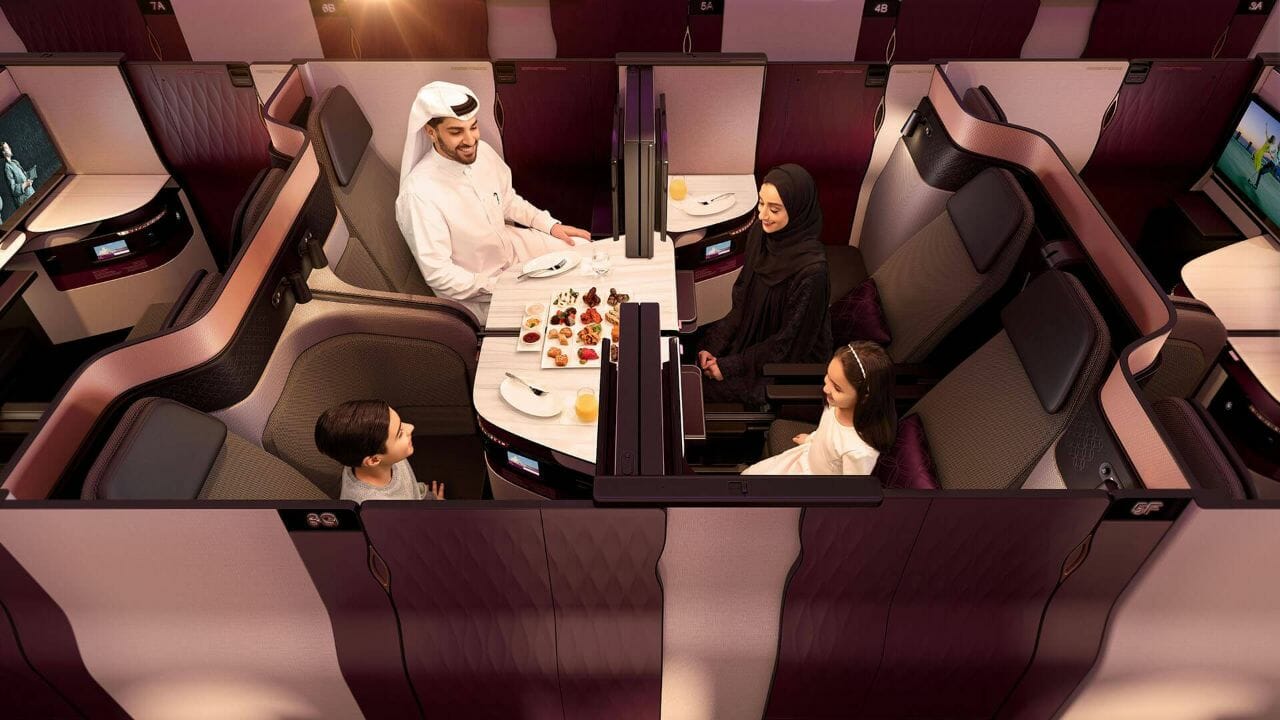
That said, unless SIA’s focus markets see heavy volumes of family travel in Business Class, the economics may not work out (the other vaunted Quad use case of businessmen taking meetings in the sky hasn’t really played out- I don’t think anyone’s particularly keen to see their colleagues in all their dehydrated glory).
Doors

The issue of doors in Business Class can be a divisive topic among the community (why?), but I’m a proud member of Team Door:
- Doors provide privacy, the extent to which depends on the implementation (some airlines build them too low), but even perceived privacy can be a psychological win for the passenger
- On a commercial airplane where it’s all about real estate, doors help demarcate personal space and boundaries. Sort of like “This is my Business Class seat! There are many like it but this one is mine!”
- Some say that doors cause claustrophobia, but I personally enjoy the feeling of being in a snug space where I’m out of eyeshot of other passengers
- Doors provide a physical barrier against light pollution from inflight entertainment screens and some degree of sound absorption
- If you’re travelling with a companion, most seats with doors have an option to put down the centre privacy divider and turn the middle two seats into a personal little enclave
- Doors allow you to subtly signal to the crew that you wish to be left alone, in a way that might be a little less hostile than a big red “do not disturb” light
- In this age of post-COVID hypochondria, some passengers may appreciate every barrier they can put between them and the rest of the cabin
There are of course those who believe that doors are overrated, but look: you can always keep yours open if you want. If I want to feel snug and secure in my makeshift Casa MileLion, what’s it to you?
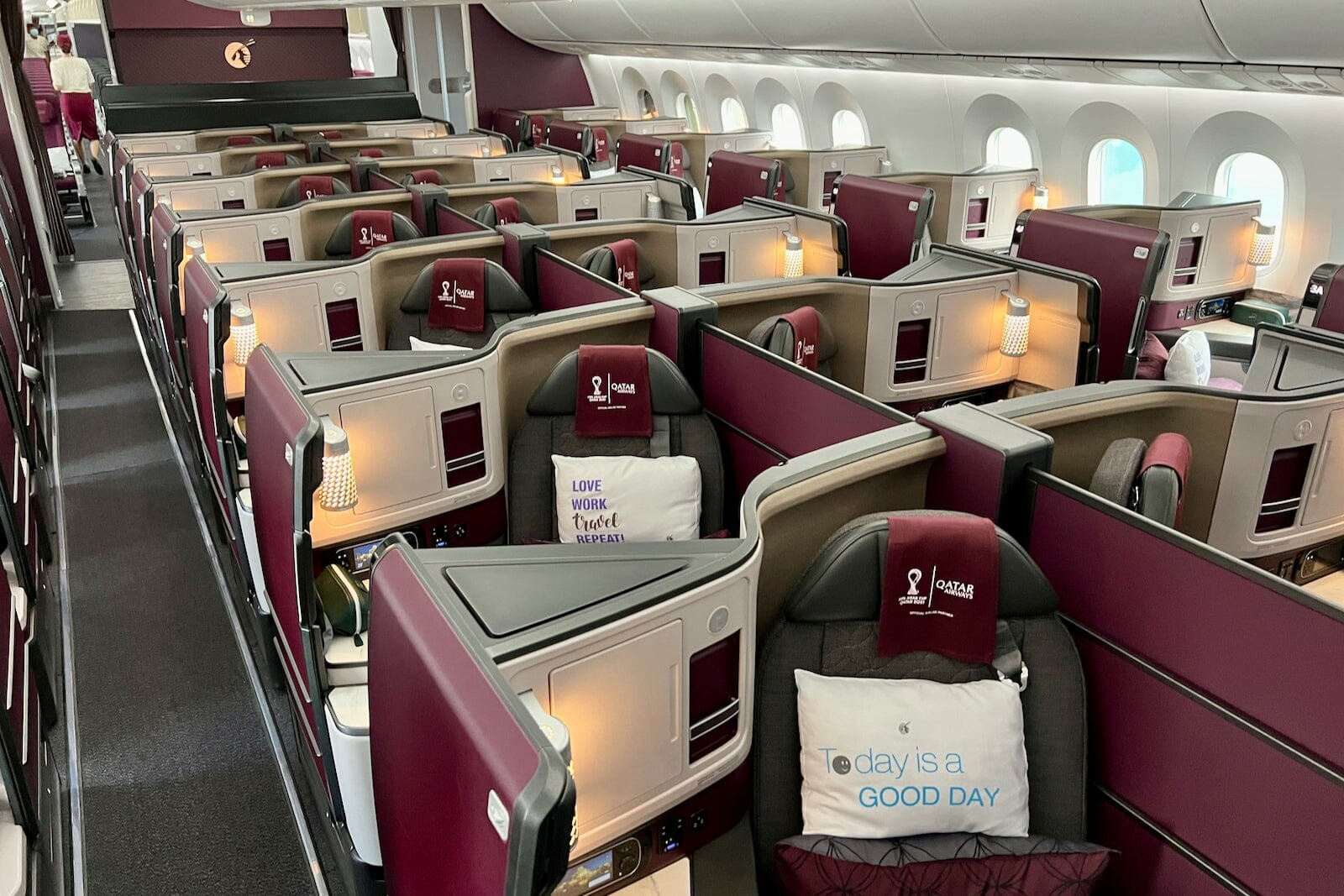
To be clear, adding a door doesn’t immediately make a Business Class seat better. I’m thinking in particular of Qatar Airways’ B787-9 Adient Ascent suite, which is uncomfortably narrow and severely lacks storage space.
That said, from my (admittedly limited) sample set, I’ve liked most of the Business Class seats with doors I’ve tried so far, namely ANA The Room and Qatar Qsuites.
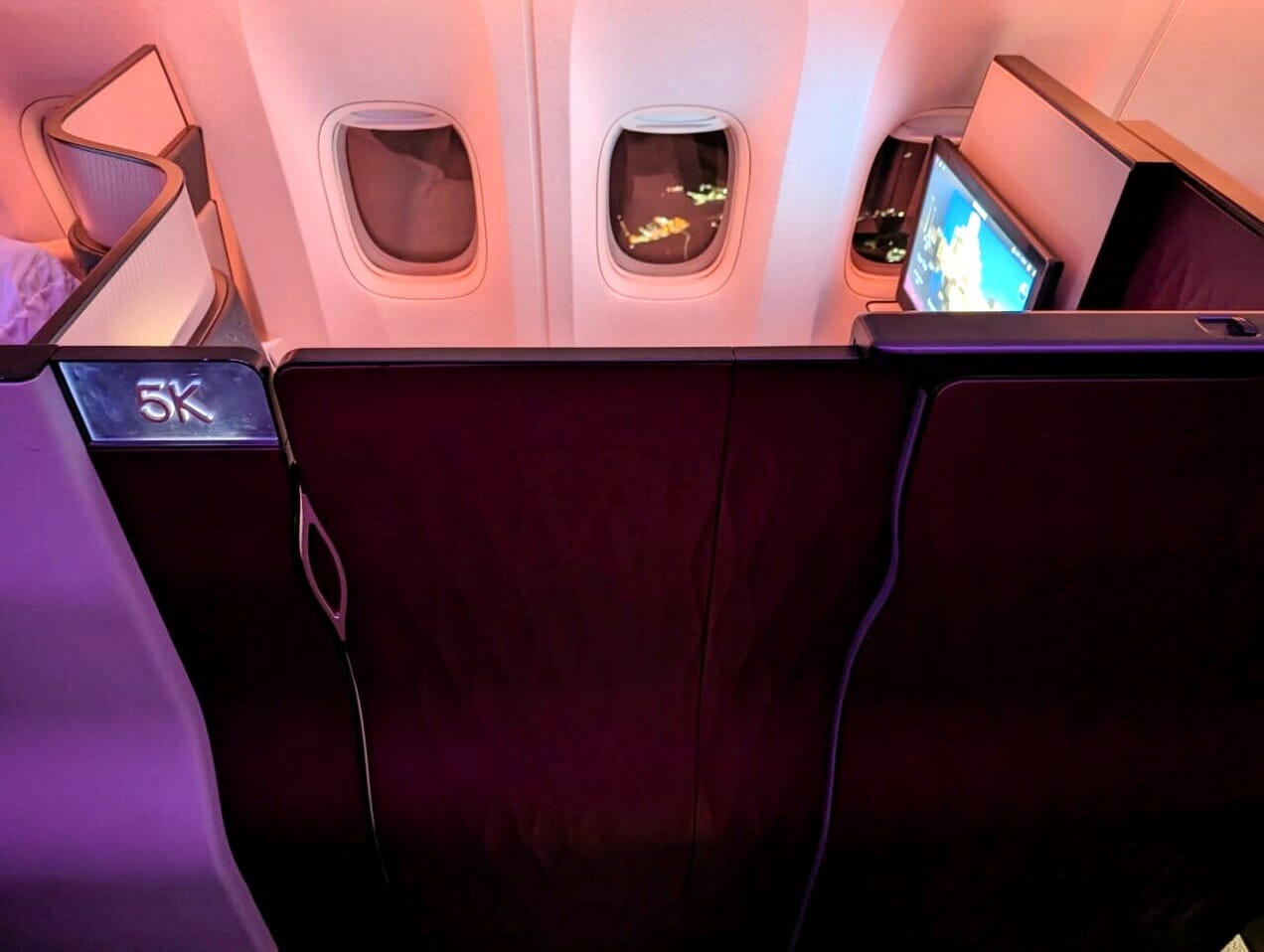
And I think it’s inevitable that doors in Business Class will become a hygiene factor. They’re already on British Airways, Delta, Etihad, and KLM, heck, even Air India and Malaysia Airlines will have doors before SIA at this rate!
Recline to flat
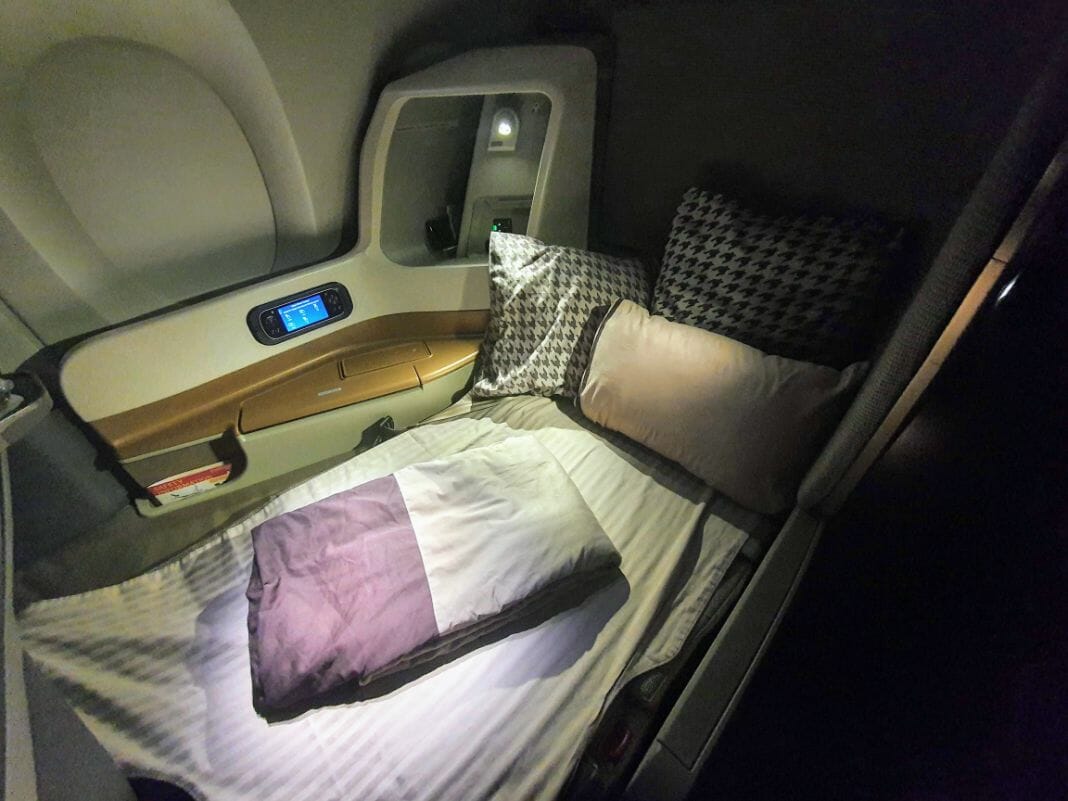
In my mind, it seems all but certain that the B777-9s will feature recline-to-flat Business Class seats, seeing as how Singapore Airlines has abandoned its flip-over seat design.
This was last seen on the 2013J seat, and every product since then — the 2017J, 2018RJ and 2021RJ — allows passengers to recline to any angle they want, all the way to flat.
Good riddance, if you ask me. I find the sleep experience on the 2013 Business Class seat to be one of the worst among the fleet, and while I can understand the case for a flip-over design (it provides a uniform flat surface for sleeping, without seams), I dislike how restrictive it is in terms of the angles you can adopt. My preferred angle for sleeping on planes is about 160-170 degrees, which I find puts less strain on the lower back (remember, when cruising the aircraft flies with its nose slightly up).
More importantly, a recline-to-flat design can be adjusted immediately after take-off, without having to wait till the seat belt sign goes off, stand up, and flip the seat. This allows passengers to eke out that much more sleep from a flight, which can be invaluable on those neither-here-nor-there redeye services. And when you’re not sleeping, recline-to-flat offers a wider range of lounging positions, which are sorely lacking on the 2013J seat.
I think it’s telling that no other major airline ever adopted the flip-over design, and with any luck, the B777-9 will turn the page on that chapter once and for all.
Storage lockers
Yes, storage lockers. I can’t for the life of me figure out why these haven’t become standard on aircraft, given the horror stories we read about onboard pilferage.
The only airline I’m aware of having such a feature is Turkish Airlines, on their A350-900s (the B787-9s have similar seats, but do not have the storage locker). A simple three-digit combination lock provides a place for passengers to store valuables like wallets, passports and phones when they head to the loo, or when they retire for the night.

I’m sure the LockPickingLawyer or any half-decent locksmith would make short work of this, but it doesn’t need to be Fort Knox- the idea is that someone jiggling with a locked cabinet is going to attract much more attention than a surreptitious swipe while walking down the aisle. The crew, of course, will have a master key should a passenger forget their PIN.
There could be more fanciful ways of implementing this, whether it’s via a digital keypad or biometric identification, but whatever the case, I would love to see a locker become a more common feature.
Technology
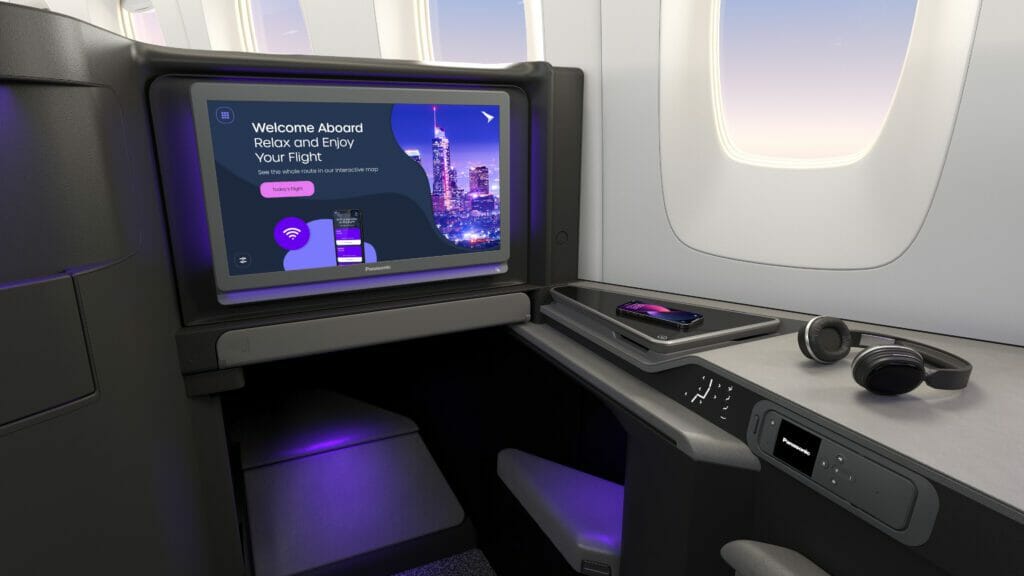
Modern IFE systems like the Thales AVANT Up or Panasonic Avionics Astrova offer features like 4K OLED screens, high-power USB-C ports, wireless charging and Bluetooth audio connectivity, all of which are absent from SIA’s current Business Class seats.
I fully expect this to be resolved on the B777-9, and it’s about time!
4K screens
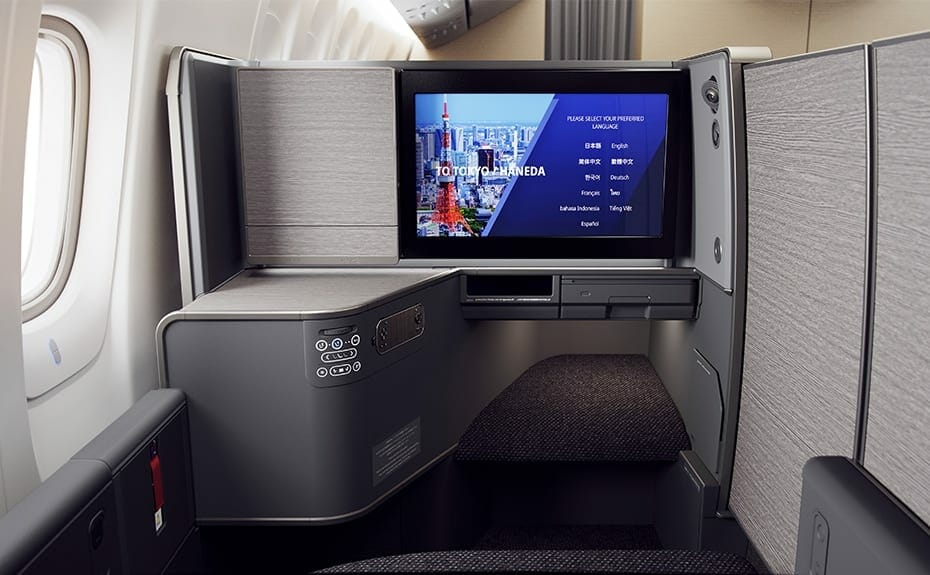
The jury’s still out as to whether 4K screens on airplanes are great or gimmicks, but for what it’s worth, I do think it can make a difference. You’re seated much closer to the screen on an aircraft than you are in your living room, so every extra pixel helps.
In 2019, ANA became the first airline to introduce 4K screens on its new The Suite (First Class) and The Room (Business Class) seats. These have since been spotted on Cathay Pacific, China Airlines, Iberia and STARLUX, with Emirates, Lufthansa and United Airlines slated to introduce them in the near future.
The problem is that IFE content hasn’t caught up with technology yet; there’s no point having 4K screens when the majority of media is, shockingly, still encoded in 480p (that’s DVD quality, FYI)! On my ANA flight, the only 4K content to watch on that lovely screen was a tech demo.
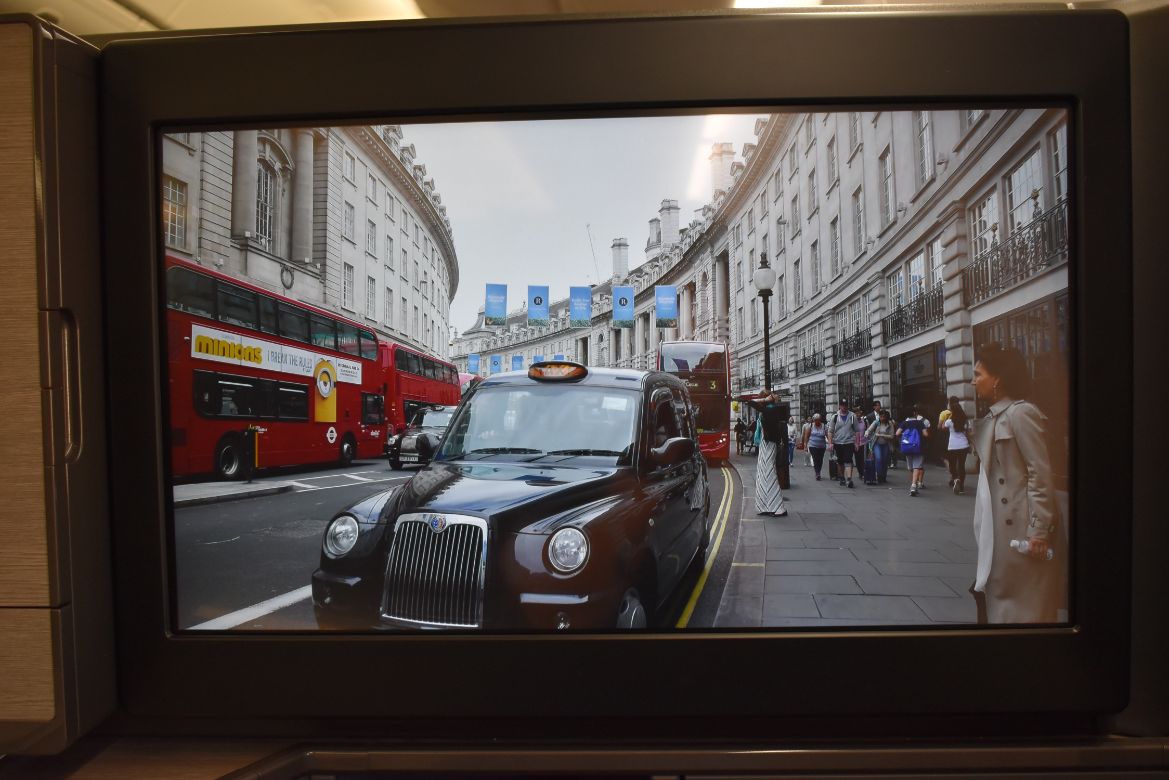
Content providers charge a premium for 4K media, so airlines often resort to upscaling lower resolution media into 4K using the IFE system. It’s a losing battle, if you ask me. 480p has 4% the pixels as 4K, and there exists no software that can magically fill in the remaining 96%. Upscaling produces mixed results, and with the larger screens in Business Class, motion blur and pixellation will be more apparent.
| 📺 IFE Screens by Resolution (estimates from Safran) |
|
| Resolution | Share |
| 720p | 45% |
| 1080p | 50% |
| 4k | 5% |
And even if airlines were willing to pay for 4K media, there’s also the question about having the bandwidth to deliver it onboard. 4K is a demanding beast, requiring around 25 Mbps for every 4K stream (multiply that by 300 seats and you’ll see the problem).
Some airlines have attempted to circumvent this by using a distributed system like Safran’s RAVE, where more popular content is stored locally on the seat’s own solid-state drive and the rest is called from a server. But it’s an imperfect solution, as I discovered on a recent STARLUX flight where the server was on the fritz, and only some passengers were able to access the full range of options.
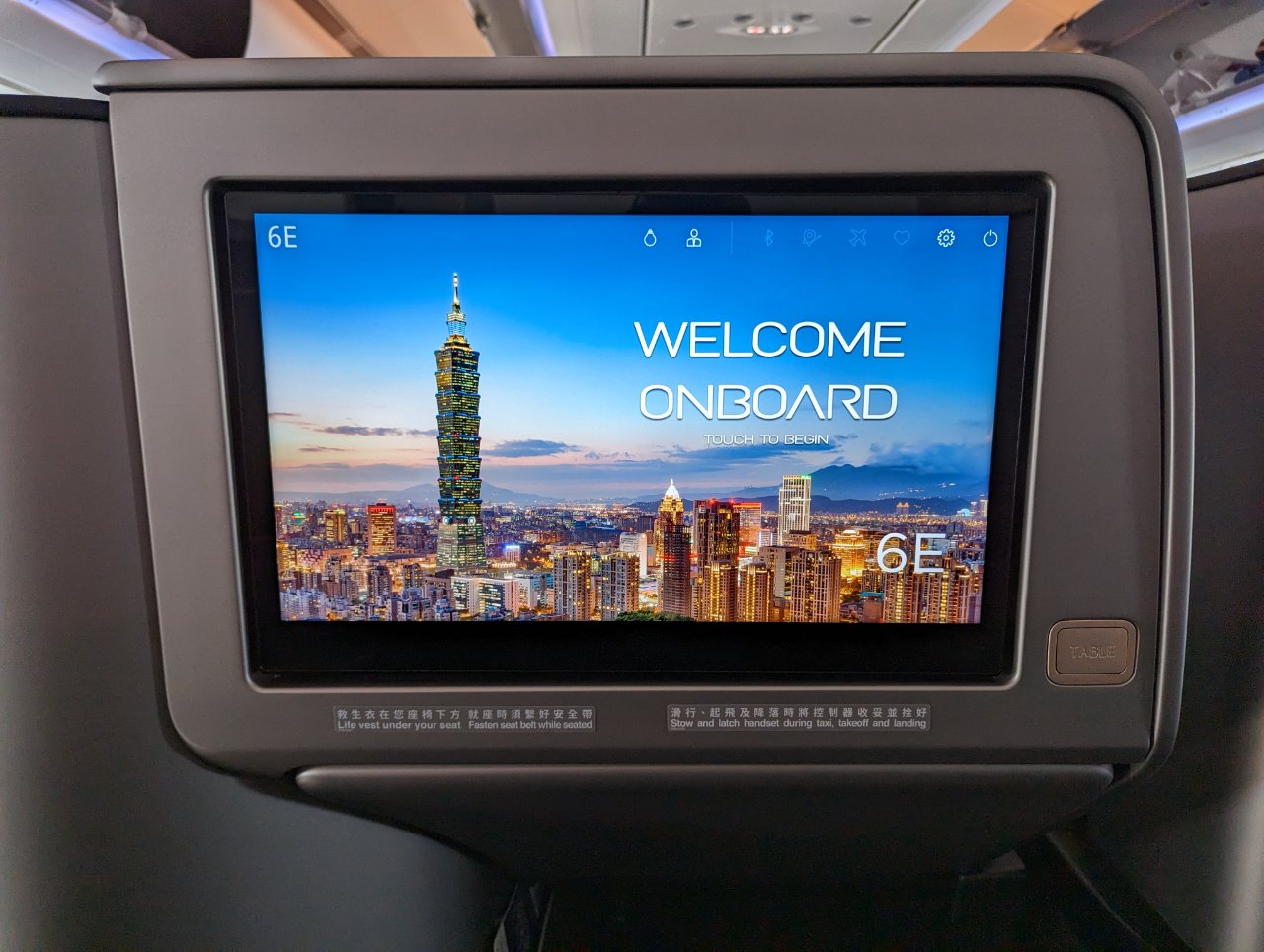
One hopes that by the time Singapore Airlines’ B777-9s take to the skies, 4K content will be more commercially viable, and the bandwidth bottleneck solved (or compression technology improved), allowing the technology to really shine.
100W USB-C charging
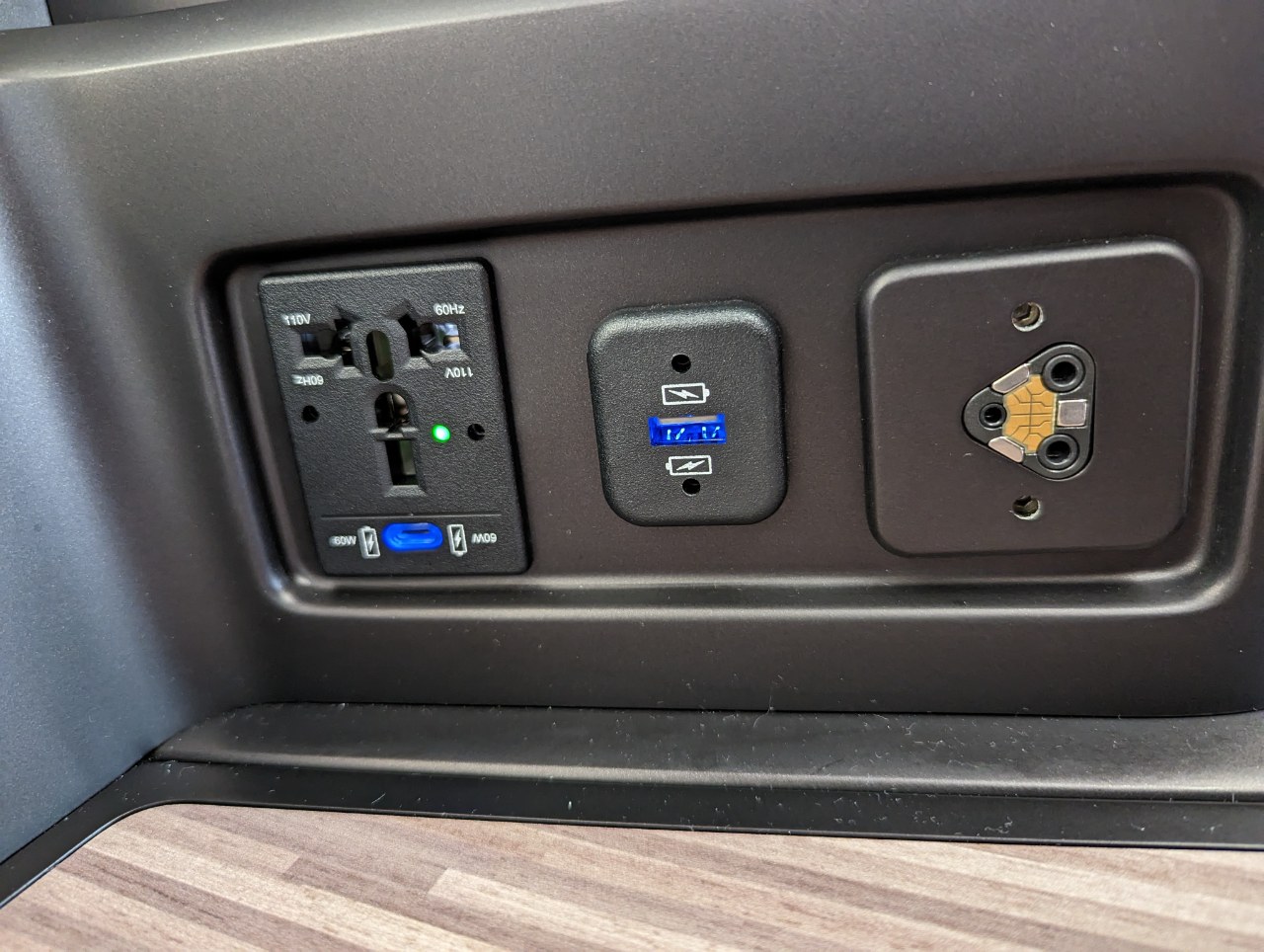
As consumer electronics grow hungrier and hungrier, charging standards need to keep up. The latest generation of EmPower outlets, seen on STARLUX aircraft, already offer Type-C outlets with beefy 60W charging (for comparison, your typical USB-A port provides a maximum of just 15W).
That’s a good start, but what I hope to see on SIA’s B777-9s is 100W charging, because at that output, you can leave your charging brick at home and juice up your laptop with a high-capacity Type-C cable.
100W charging is more than sufficient for an Apple Macbook Pro or a Lenovo ThinkPad. It can charge a dead laptop to 50% in under 30 minutes, and to 85% inside an hour. That makes a huge difference on a shorter flight, especially when your device is on life support.
And yes, I know that 100W speed isn’t maintained the whole time, but higher wattage also allows you to charge other devices concurrently.
Wireless charging pads
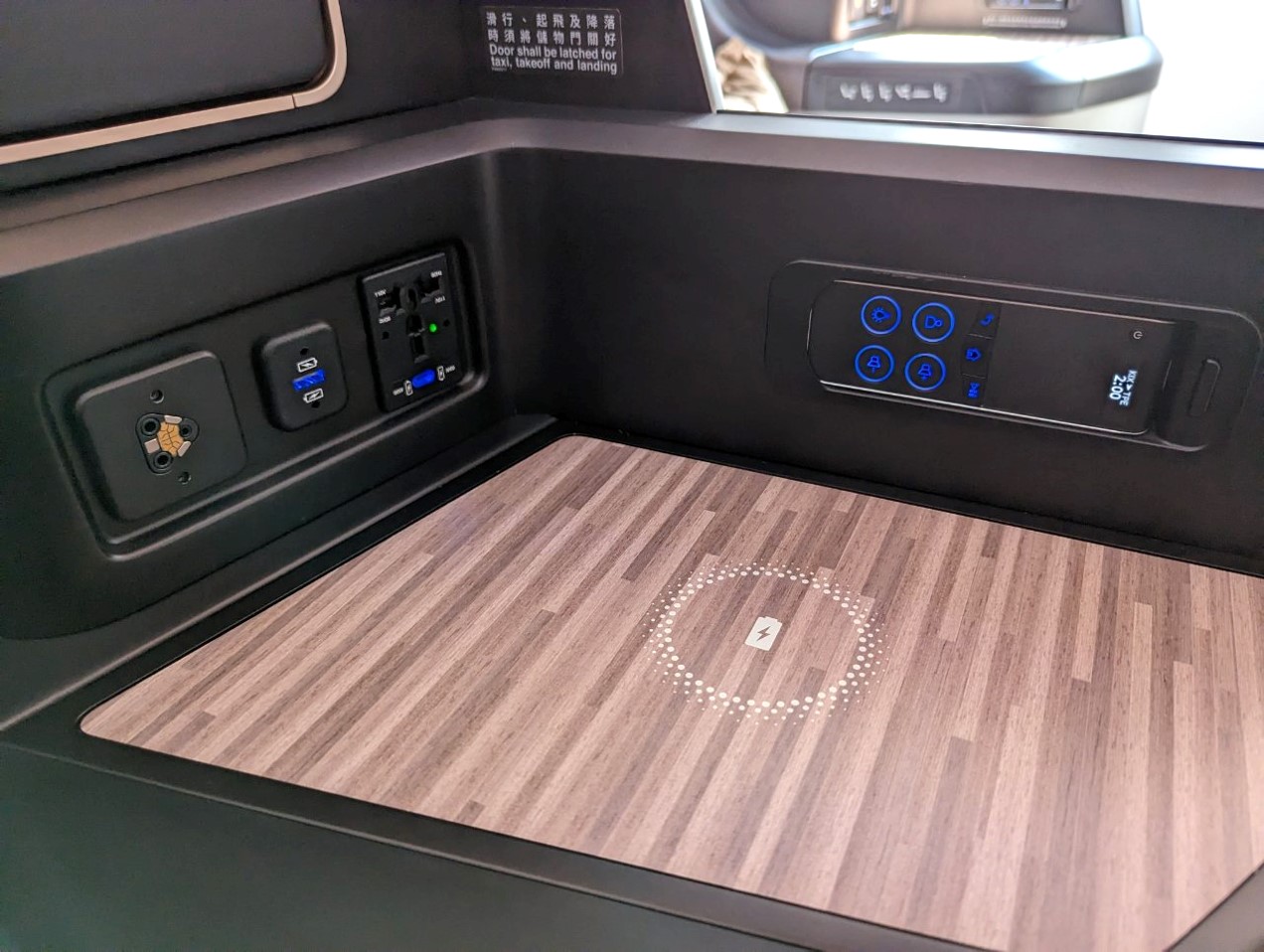
Wireless charging pads keep your personal area free of wires, and they give the seat a distinctively futuristic feel. I’m almost certain that SIA’s new B777-9s will have wireless charging pads- the question is how good they’ll be.
The way I see it, there’s two problems with current-gen wireless charging pads: power and placement.
With regards to power, the charging rates I’ve encountered so far have been glacial. I don’t have any official stats, but I’d be surprised if it was higher than 5-10W. That’s especially a problem on regional flights, where the lack of time compels you to resort to wired charging, rendering wireless charging pads superfluous.
With regards to placement, the wireless charging pads I’ve had have been very finicky about where the device goes. Stray just an inch outside the lines, and that device you thought was juicing up will be dead by the time you wake.
These are, thankfully, solvable problems. The next generation of wireless charging pads promise faster juicing and wider placement radii, and perhaps here’s where SIA will benefit by not being an early-adopter.
Of course, wireless charging pads prevent you from interacting with your device while charging, so the true breakthrough will be when wireless power (which beams power through the air instead of via a pad) is ready for prime time.
That’s probably not coming this decade, but we can dream, right?
Bluetooth audio connectivity (with dual audio support)
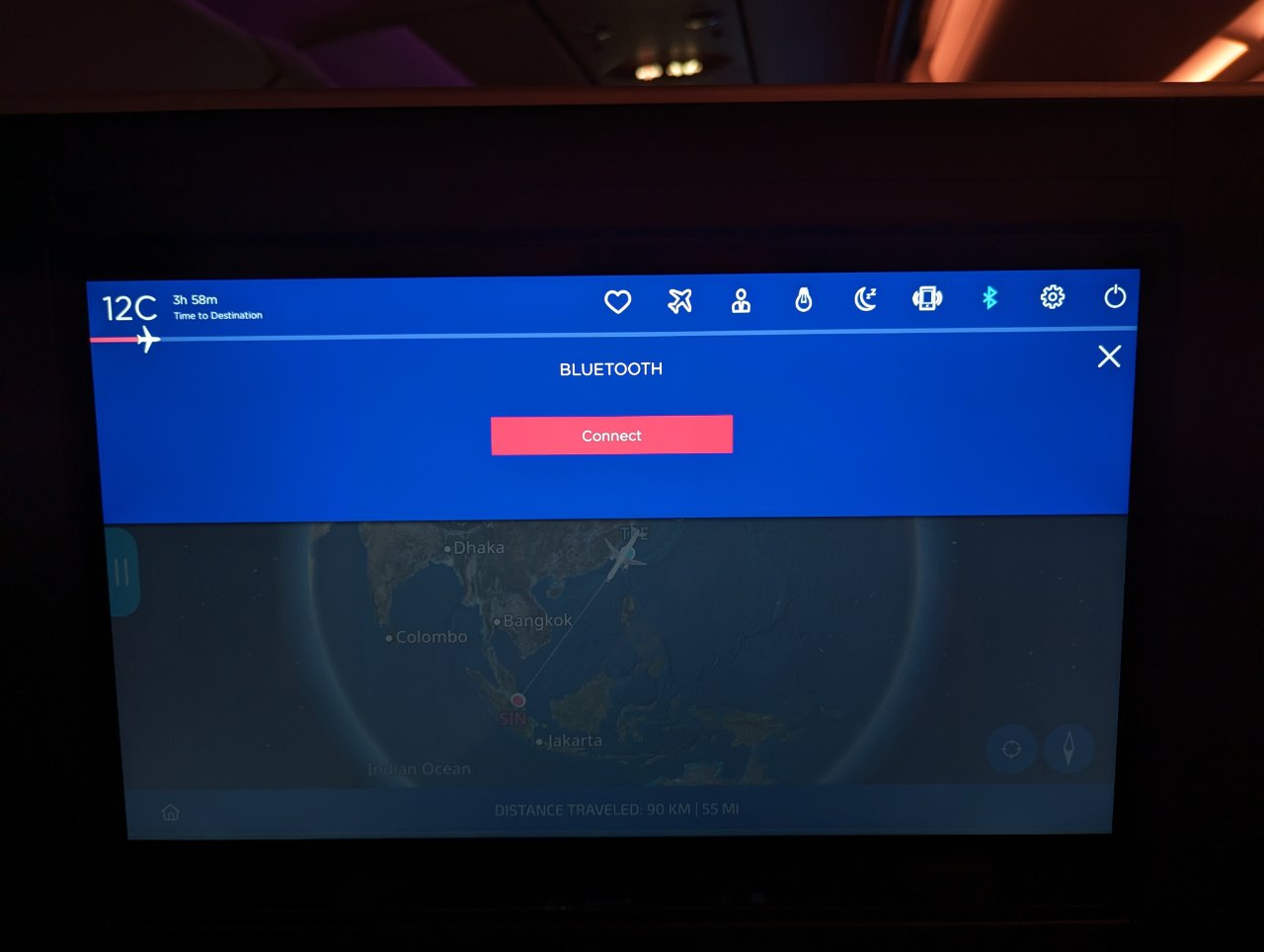
It’s quite clear that passengers want Bluetooth audio connectivity; witness the advent of stopgap solutions that plug in to existing aux jacks. Bluetooth audio connectivity is already offered by several airlines, and seems like a win-win outcome for everyone.
Unless you’re flying in First Class, odds are your personal headphones are of better quality than what the airline has to offer, plus they’re in a form factor you’re already comfortable with (e.g. earbuds, over ear, on-ear, bone-conducting). Wireless connectivity also keeps your area free of pesky wires- already a bugbear in Business Class, but even more annoying in the cramped confines of Economy. And when more passengers start bringing their own headsets, airlines can cut back on the number they stock, reducing weight and cleaning/replacement costs.
I’d personally like to see an IFE system that supports two simultaneous Bluetooth connections, so couples can share a movie together.
Conclusion
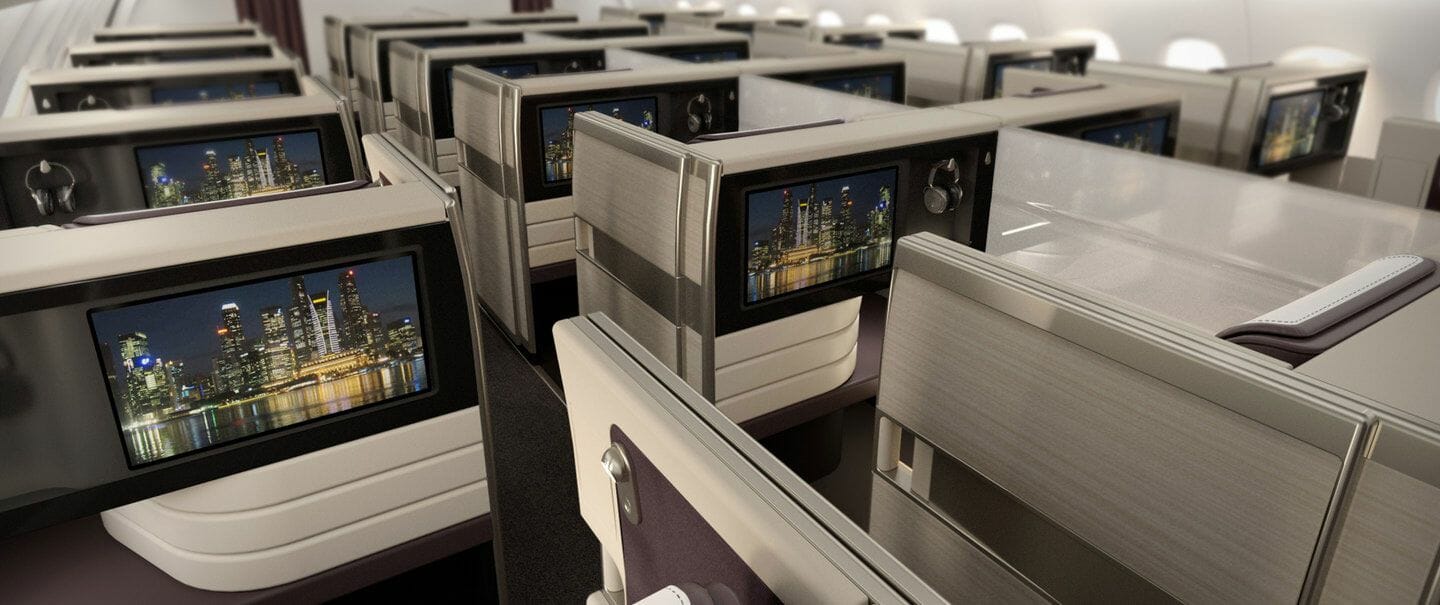
Even in a best case scenario, we’re still two years away from seeing the debut of Singapore Airlines’ next-generation Business Class seat (unless perhaps SIA decides to introduce it ahead of schedule on the A350-900ULRs, as Executive Traveller hypothesises).
So the question on my mind is: how much longer can the 2013J seat chug on? It gets less and less competitive by the day, but if the 2006J seat is anything to go by (15 years from introduction to retirement), we could very well be seeing it in some capacity until the second half of this decade!
SIA’s CEO has promised a “quantum leap” with the new cabin products, and I certainly hope so. While its service remains second to none, the current 2013J seats wouldn’t even feature in my top 10 list of Business Class hard products. The competition is upping its game, and an airline that has always prided itself on being at the forefront of innovation is now dangerously close to being left behind.
What are you hoping to see from SIA’s new Business Class product?
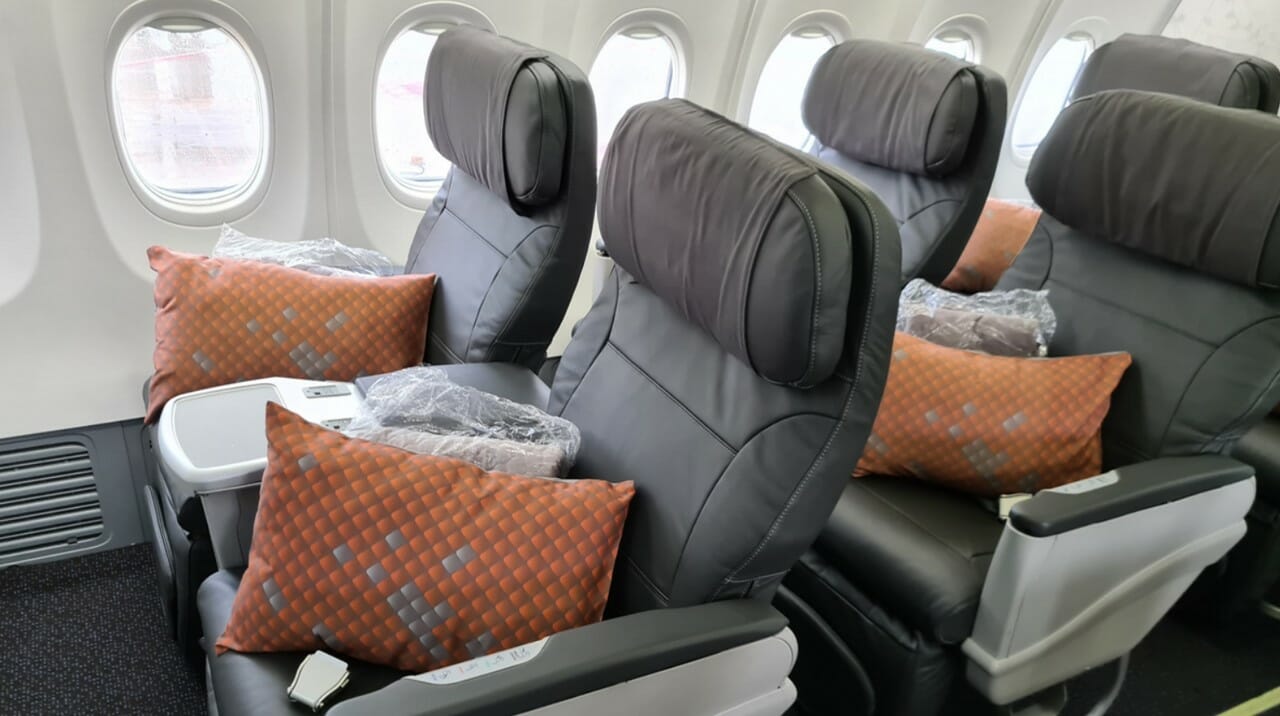
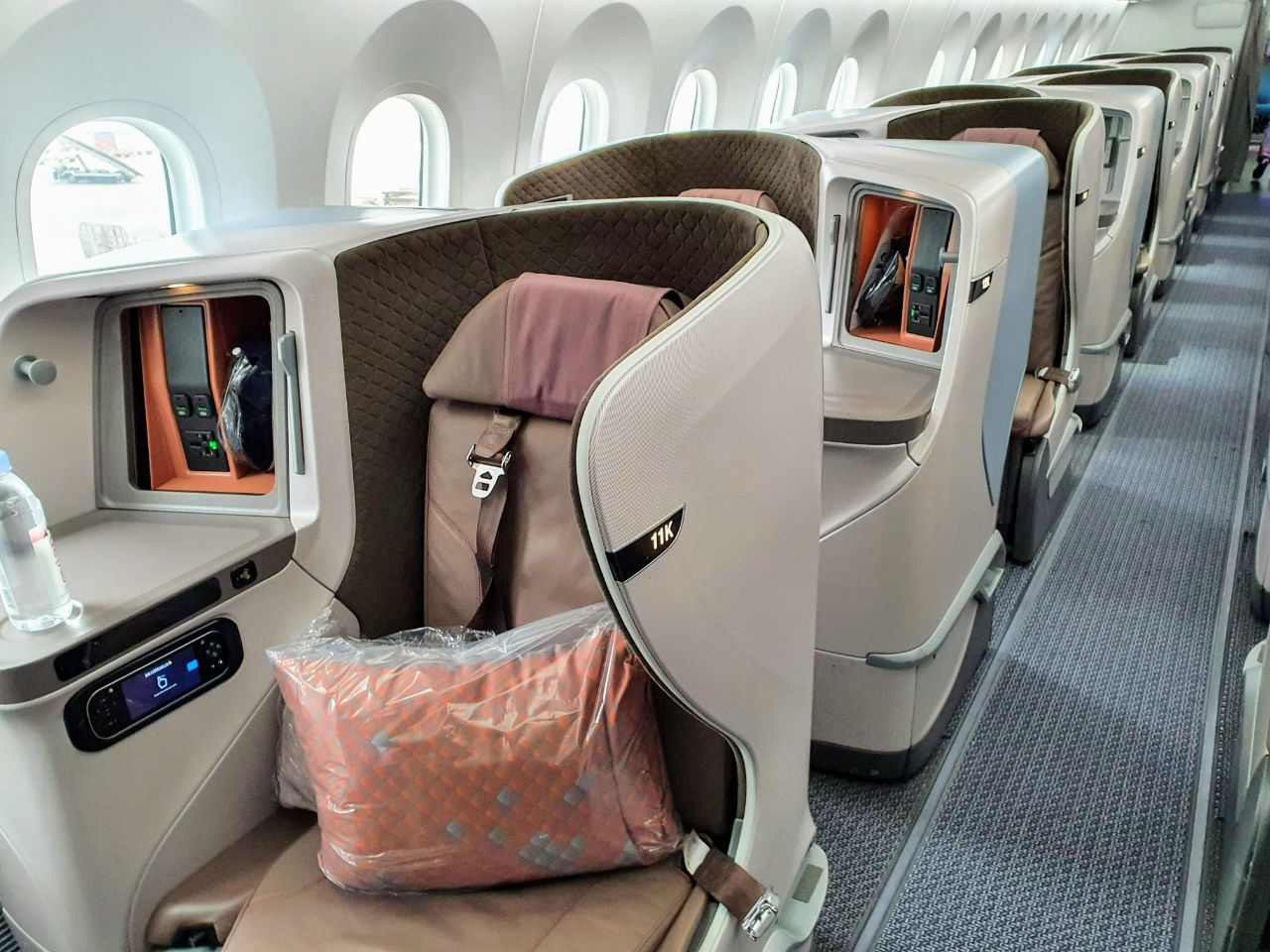
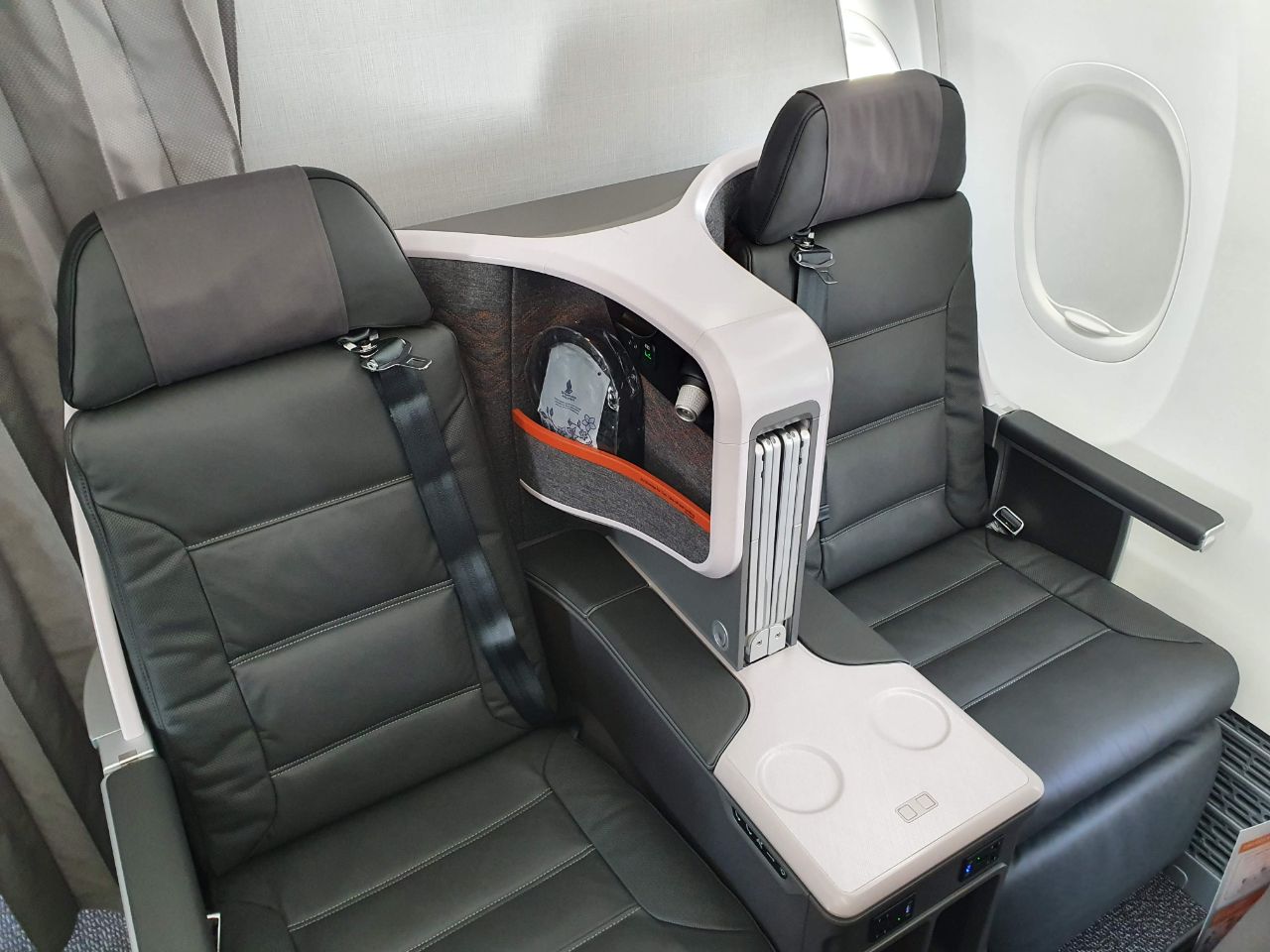
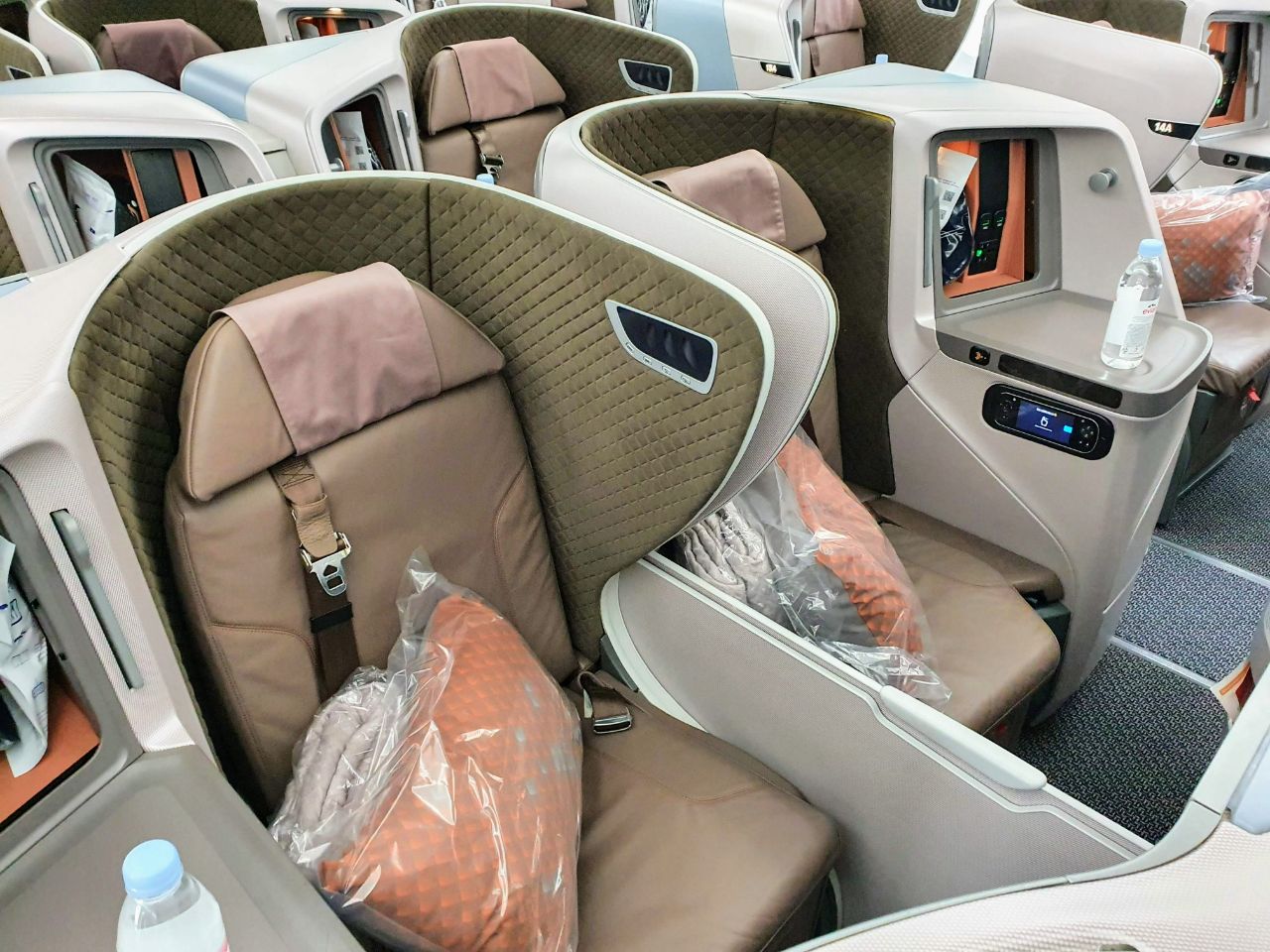





Singapore Airlines’ business class peaked with the 2006J, period. Heck, it’s the best J product ever rolled out into the market IMO, past, present, or future. Absolute travesty that they’ve retired all of them and then flood all their entire fleet with the awful 2013J.
fully agreed. 2013J was a refinement of 2006J. The closest seat out there to 2006J is ANA the room and that only happened 13years later
Revering on the past doesn’t an airline make. Reflecting on the current gaps to the best in the industry provides the most important insight to what can be done better and what needs to be kept. Singapore Airlines peak was when JY Pillay was at helm doesn’t mean it’s still the best now, we need to be honest with ourselves. What Aaron is asking should be the bare minimum for the worlds greatest way to fly, according to Skytrax.
allow me to play devil’s advocate here for a moment. the 2006J seat was revolutionary for its time, I agree, but its main selling point was width, right? And in fact some customers found it too wide, so much so that SQ had to add some cushions. What else did the 2006J do better than the 2013J (footwell size? I can’t remember how cramped 2006J was)
The sheer width falling each generation and worse angle make it in terms of sleeping 06J > 13J > 17J for me. Significantly better experience on the SQ21/22 flight before the 2013 cancellation than after reinstatement with the A350.
The width was certainly great, but the generosity of the entire experience was what really made it the epitome of J products for me. The beautiful Poltrona Frau leather that aged so gracefully (despite its stains), expertly padded seats, plush-for-a-plane dedicated bed, and the amazing service the crew used to provide consistently. All that is but a memory. Just like the Private Room, which used to be such a refined and personable space. With how it looks like now, they really should call it Privilege Room instead because it looks exactly like any other privilege banking lounge out there –… Read more »
To me 2006J is like a comfy old couch. You know you’d like it, but not the thing you would be proud to show off to everyone.
and also it has a lot of mysterious stains you tell people is coffee but everyone knows it’s not coffee
i think someone needs a new creative seat design. The next step beyond the foot cubby. Which was a great invention to give airlines better economics and passengers more comfort in business class.
Interesting about the locker issue, I came to this article wanting to raise something similar. I have a problem with the A380 J seats, in that if you’re in the centre seats the storage options on the aisle side. From a theft perspective really easy to pinch things, as opposed to the window seats where it is towards the window. Because of the curvature of the seat shell it is even worse in that it actually faced away from the seat and into the aisle. That’s quite a bad miss in design. Understand though a door would be handy in… Read more »
That Missingno cameo made me fall off my chair.
finally, a man of culture.
Seats where I can actually look out the window. Whoever designed the 2017J with the shells obscuring half the windows should be fired.
I would like a zero gravity position for the seat. Best sleep ever.
Maybe too much to ask, but hopefully one day we will be again able to sit as a couple next to the windows ans not the middle section
Lv 255 snorlax appears
I might be in the minority but I prefer 2013J to 2017J. I value seat width, I don’t mind flipping the bed down, and the 2017J table feels very cheap (especially compared to the 2018RJ one). Maybe I’m lucky but I tend to pick the bulkhead rows where there’s a lot more space. I hope SQ doesn’t continue the trend of reducing seat width.
2013/2017 J long haul is fine but I do wish the next generation has a straight sleeping position, sleeker adjustable TV that is actually fully aligned with the seat, fast wireless charging and wireless earphones should become standard, non-glare diffuse reading light will be nice, and even a pin locker for storage will be wonderful. Whatever they do, I hope they will not using something like the regional J class seats which are absolutely awful. They have wings on the window side…for what? Fells claustrophobic. The colour and materials CMI. It will also be good if SQ catering improves. The… Read more »
Doors like ANA The Room, please. and definitely no diagonal sleeping into a tiny cub hole would be great. Wireless charging. Those fancy tinted windows that are adjustable.
For me, the worst aspect of SQ’s J seats (except the one on B787s) is the fact that unless you are in the bulkhead row, your stretched legs go diagonally in a cubby, while the seatback is perpendicular to the angle of the aircraft. For all intents and purposes, it’s a herringbone configuration with straight seats, which creates a really uncomfortable position, especially when relaxing/lounging.
I really hope they finally fix this for the new seat.
I think the main issue for taller passengers is the foot box. There is no way you can sleep comfortably. One foot on top of the other, one leg on the other, it is very limiting in the position to sleep and if you want to bring up your legs no chance. Overall very poor and makes flying business for long haul a poor investment if you want to sleep and that is why you pay the big bucks in the first place. SIA need to ensure they have got this right before any of the other add ons and… Read more »
e-menu ordering service for light bites, snacks, drinks etc. instead of pressing the request for help button. Saves both sides time and perhaps even some awkwardness (some people are extremely private and doesn’t like to talk!) unless you are requesting for special order! 🙂